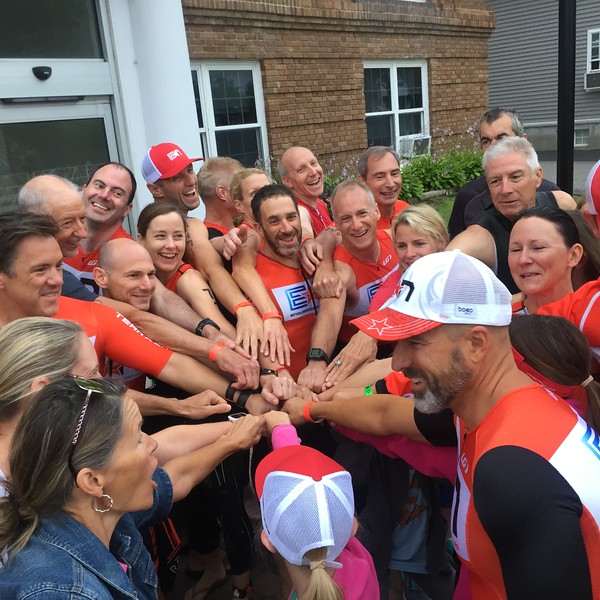
Triathletes often join our squad after their first or second year of long course racing and proclaim their desire to get faster. Here are five reasons we encourage them, and you, to consider short course racing as a great make-you-faster supplement to their long course triathlon focus.
If You Want to Get FASTER You Need to Train Your FAST!
During the OutSeason we train our athletes to be faster and more durable 5k, 10k, and half marathon runners, and faster 40k time trial cyclists. We are 100% focused on building their FAST directly on top of their season-ending FAR — their endurance. Then as they exit the OutSeason, we strongly encourage them to keep this make-me-faster train rolling by scheduling a series of short course races, or a late spring/early summer half Ironman. That fact is, we only put them into their long course training plan for the final 10-12 weeks before their race. This is our Race Preparation phase. But before this period we want them training and racing like short course athletes.
But there are significant mental gains to had beyond the fitness gains of a solid block of short course style training and racing:
The Split Season — Preserve Mental Currency and Spousal Approval Units (SAUs) to be Spent Closer to Your Race
We’ve learned that training volume applied closer to your long course race is more valuable, on race day, then volume applied months and months in advance. And so we want the Mental Currency and Spousal Approval Unit (SAU) balances of our athletes to be very much in the black when they enter the most critical period of training, which begins about 7 to 8 weeks out from their event. We prepare our athletes to be able to apply their heaviest training focus to that last 7 to week block by having them conserve their mental energy across a long season by (1) training and racing shorter events and in the process (2) trick them into thinking they are not training for their AAA-race, when in fact they actually are.
We encourage them to develop a split season approach to planning their triathlon race season. For example:
- Race local 5k’s and 10k’s during the OutSeason, giving them very fun and short term goals and testing opportunities across their OutSeason training plan. Finish the OutSeason with a half marathon which (1) serves as their training target across the OutSeason, and (2) a valuable tool for maintaining accountability for their run training across the OutSeason.
- Take this OutSeason fitness and target a mid-spring century. Rides that feature a lot of climbing serve the additional purpose of helping create accountability towards your body composition goals.
- Next, turn this fitness towards targeting a couple local short course races in May and June, for example.
This series of fun single sport and short course races outlined above serves as the first half of their season, one that is fun, relatively low volume and low stress, helping them conserve their valuable head space and Spousal Approval Units (SAUs) to be applied in the Race Preparation Phase of their training.
Experience and Manage Race Day Nerves
Racing smaller events frequently gives you many opportunities to develop and go through pre-race checklists, experience the excitement and potential friction of race morning, solve race day execution problems and more. In short, the more you race, the better you become at managing all things racing — logistics, setup, pacing, race day problem solving, and more.
Racing makes You Hard(er)
During the OutSeason our athletes do a LOT of interval based training. We often seen great gains from athletes new to this form of training, gains that are equal parts fitness adaptations and increased mental toughness — through focused, intense interval-based training they become more and more comfortable with increasing levels of discomfort. Racing short and hard, frequently, introduces you to another level of discomfort, one that’s seldom duplicated in training, increasing again your comfort with discomfort.
Racing Often Makes You a Better Racer
What is my most efficient race morning routine, that works best for me? Should I race my AAA+ long course triathlon with a wheelcover? What about this or that bottle setup? What should I actually have and do in my transitions? How do I handle the scrum at the start of the swim? How does my body react to the first 20 minutes of the bike, after a hard swim? What is my best strategy for getting my run legs back off a hard, race effort bike? Short course racing offers you opportunities to test out any number of variables during race conditions, so you can refine your game day plans for your AAA+ race.
It’s All Just a Game
Triathlon is supposed to be fun! As you train for your Big Race, don’t lose sight of the fact that in the process you are building a very nice vehicle for doing cool stuff with fun people who share your passion and commitment for living a fitness lifestyle. So we encourage you to put fun stuff on the calendar, train for and race those events with your friends. Then wake up about 12wks out from your AAA+ with a good, refreshed mental attitude, plenty of SAUs in the bank, and eager to do the hard work of converting that short course speed to long course endurance fitness.
Good luck and happy racing!

Leave a Reply